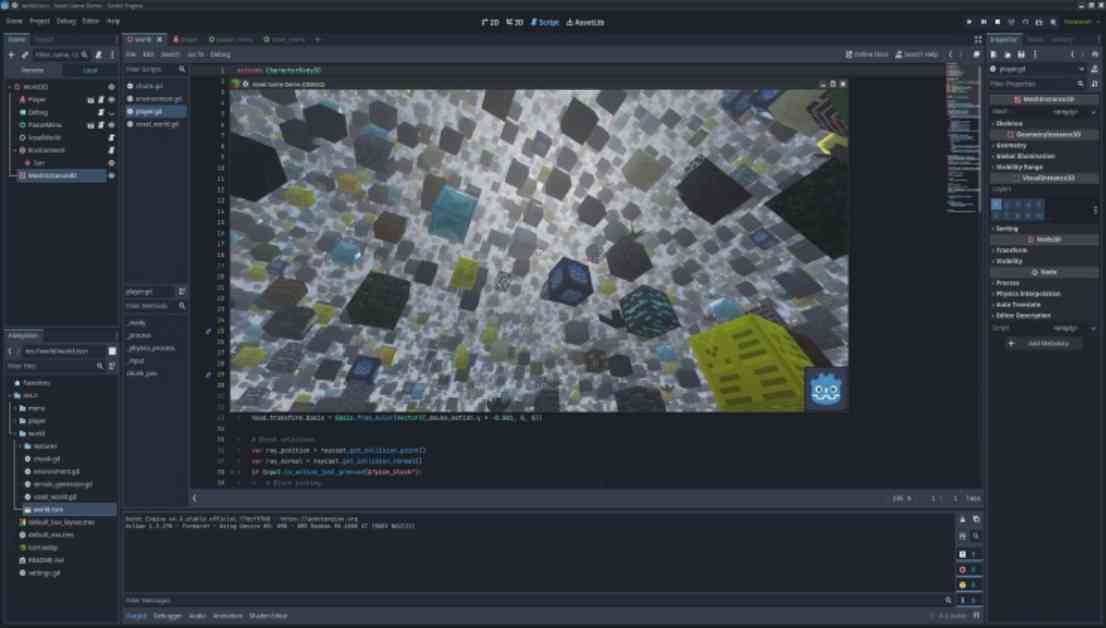New Features in Godot Engine 4.3
The Godot team has really outdone themselves with the release of Godot Engine 4.3, introducing a plethora of new features and improvements that are sure to excite game developers worldwide. One of the most notable changes is the revamped release page, which now showcases the new additions in a more visually appealing and user-friendly manner. This change demonstrates a new level of professionalism for the Godot Engine and sets the stage for what’s to come in the future.
Among the many impressive features added in this release are new audio resources that allow for the creation of complex, layered music and smooth transitions. This is a game-changer for developers looking to enhance the audio experience in their games and create immersive soundscapes that truly bring their creations to life. The addition of 2D physics interpolation also opens up new possibilities for realistic movement and interactions in 2D games, adding another layer of depth to the gameplay experience.
The visual shader editor has been overhauled in Godot Engine 4.3, making it easier than ever for developers to create stunning visual effects and shaders for their games. This tool is essential for creating eye-catching graphics and enhancing the overall visual appeal of a game, and the improvements made in this release are sure to streamline the process for developers.
Godot Engine 4.3 also introduces general multi-threading improvements, which will help to optimize performance and make games run more smoothly on a variety of hardware configurations. This is a crucial update for developers looking to create high-quality games that can run efficiently on a wide range of devices, ensuring a better overall experience for players.
Another standout feature in Godot Engine 4.3 is the more flexible layers for TileMaps, which give developers greater control over the layout and design of their 2D tile-based game worlds. This feature allows for more intricate and detailed level design, opening up new creative possibilities for developers looking to create visually stunning 2D games.
Enhancements and Improvements
In addition to the new features, Godot Engine 4.3 also includes a number of enhancements and improvements that further solidify its position as a leading game development engine. The new skeletal animation import options make it easier for developers to work with complex character animations, while the improved pixel art stability ensures that games with retro-inspired graphics maintain their visual integrity across different platforms.
The big improvement to Godot’s parallax system is a game-changer for developers looking to create dynamic and immersive 2D game worlds. This feature allows for more realistic depth and movement in the background layers of a game, adding a new level of realism and immersion for players.
The Project Manager design improvements make it easier for developers to navigate and organize their projects, streamlining the development process and making it easier to collaborate with team members. This update is a welcome addition for developers looking to stay organized and efficient while working on their games.
Depth-based fog is now possible in Godot Engine 4.3, adding another layer of atmosphere and visual depth to game worlds. This feature allows for more realistic and immersive environments, creating a more engaging experience for players as they explore the game world.
Technical Updates and Support
Godot Engine 4.3 also introduces a number of technical updates and support features that further enhance the capabilities of the engine. The addition of Direct3D 12 support opens up new possibilities for developers looking to create high-performance games that take advantage of the latest graphics technologies.
The Compositor effects API allows users to hook into the built-in Godot rendering system, giving developers more control over the visual effects and rendering process in their games. This feature is essential for creating stunning visual effects and enhancing the overall look and feel of a game.
More Wayland improvements on Linux, while still opt-in, demonstrate the Godot team’s commitment to supporting a wide range of platforms and ensuring that developers can create games that run smoothly on various operating systems. This update is crucial for developers looking to reach a broader audience and make their games accessible to as many players as possible.
In addition, 2D content now renders less blurry in XR, improving the visual quality of games created with the Godot Engine. This update is essential for developers looking to create immersive VR and AR experiences that look crisp and clear on a variety of devices.
Slimmer GDScript project exports with Binary tokenization make it easier for developers to share and distribute their projects, reducing file sizes and improving overall performance. This update is essential for developers looking to optimize their games for distribution and ensure a smooth experience for players.
Overall, Godot Engine 4.3 is a major step forward for the open-source game development engine, introducing a wide range of new features and improvements that will benefit developers of all skill levels. With enhanced tools, improved performance, and expanded support for a variety of platforms, Godot Engine 4.3 is poised to revolutionize the way games are created and enjoyed by players around the world.













